Table of Contents
Transitive verbs are action words that need a direct object to complete their meaning. Without the object, the sentence feels incomplete. For example, in She writes a letter, writes is a transitive verb, and a letter is the direct object.
Transitive verbs are important for clear communication in English. This post will explain how to identify and use them with examples, rules, and common mistakes. Let’s make learning transitive verbs easy for you!
What are Transitive Verbs?
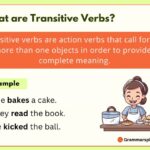
Transitive verbs are action verbs that call for one or more than one objects in order to provide the complete meaning. These verbs pass on the action to a direct object which is the recipient of the action contained by the verb.
For Example:
She bakes a cake.
They read the book.
He kicked the ball.
In each sentence, the action (bakes, read, kicked) needs a direct object (cake, book, ball) to make sense.
How to identify Transitive Verb
To identify a transitive verb, look for an action verb followed by a direct object. The easiest way to check is by asking what? Or whom? After the verb. If the answer is a noun or pronoun, the verb is transitive.
For example:
- She bought a book.
In this sentence, bought is the transitive verb, and a book is the direct object receiving the action.
- He painted a picture.
In this sentence, painted is the transitive verb and a picture is the direct object receiving the action.
- He buys a car.
In this case, buys is a transitive verb because it needs a car to complete its meaning.
Rules of intransitive Verbs
♦ Must have a direct object:
A transitive verb requires a direct object to complete its meaning.
- She kicked the ball.
Kicked is a transitive verb, and the ball is its direct object.
♦ Cannot stand alone:
A transitive verb cannot form a complete sentence without a direct object.
- He wrote a letter.
Wrote alone isn’t enough; a letter is necessary to complete the thought.
♦ Answers “what” or “whom”:
The direct object of a transitive verb answers the question what or whom.
- They built a house.
The verb built answers what (a house).
♦ Can be in active or passive voice:
Transitive verbs can be used in both active and passive voice.
- The chef prepared the meal (active)
The meal was prepared by the chef (passive).
♦ Often used with phrasal verbs:
Transitive verbs can form phrasal verbs with particles or prepositions, still requiring a direct object.
- She picked up the book.
Picked up is the phrasal verb, and the book is its direct object.
Usage of intransitive Verbs
To use transitive verbs correctly, ensure that the verb has an object to receive the action. Without an object, the sentence may be incomplete and unclear. Proper use of transitive verbs ensures clarity in communication.
- He ate an apple.
Here, the verb is ate and the direct object is an apple.
- She gave her friend a book.
In this sentence, the verb is given, the direct object is a book, and the indirect object is her friend.
- He told his brother a story.
In this sentence, the verb is told, the direct object is a story, and the indirect object is his brother.
Note: Some transitive verbs can also have an indirect object, which indicates to whom or for whom the action is done.
List of Transitive Verbs
- Bring
- Buy
- Call
- Eat
- Find
- Give
- Leave
- Make
- Offer
- Take
- Write
- Send
- Build
- Read
- Catch
- Choose
- Wear
- Drink
- Play
- Break
Example Sentences
- She brought a gift to the party.
- He bought a new car yesterday.
- They called their friend to invite them.
- She ate an apple during lunch.
- He found his keys under the sofa.
- She gave her brother a present.
- They left the package on the doorstep.
- He made dinner for his family.
- She offered him some advice.
- He took his coat before leaving.
- She wrote a letter to her friend.
- He sent an email to his boss.
- They built a house near the lake.
- She read the book in one day.
- He caught the ball during the game.
Transitive vs. Intransitive Verbs
Verbs can be classified into two main types: transitive and intransitive. Here’s a breakdown of their differences:
Transitive Verbs
A transitive verb requires a direct object to complete its meaning.
Action: The action of the verb is directed towards a person or thing (the object).
Structure: Subject + Transitive Verb + Direct Object
- She bought a new phone.
- They read the book.
- He wrote a letter.
Intransitive Verbs
An intransitive verb does not require a direct object to complete its meaning.
Action: The action of the verb is not directed towards an object.
Structure: Subject + Intransitive Verb
- The baby cried.
- They laughed loudly.
- The flowers bloomed in spring.
Common Mistakes
Common mistakes with transitive verbs can lead to confusion and unclear communication. Recognizing and avoiding these errors is essential for effective writing and speaking. Here are some typical mistakes:
Omitting the direct object
A transitive verb needs an object to complete its meaning.
❌ She brought.
✅ She brought a book.
Using an intransitive verb as transitive
Some verbs don’t need an object, but they are mistakenly used as if they do.
❌ He arrived the meeting.
✅ He arrived at the meeting.
Inconsistent verb-object agreement
The object should logically follow the verb.
❌ She bought to the store.
✅ She went to the store.
You May Also Like

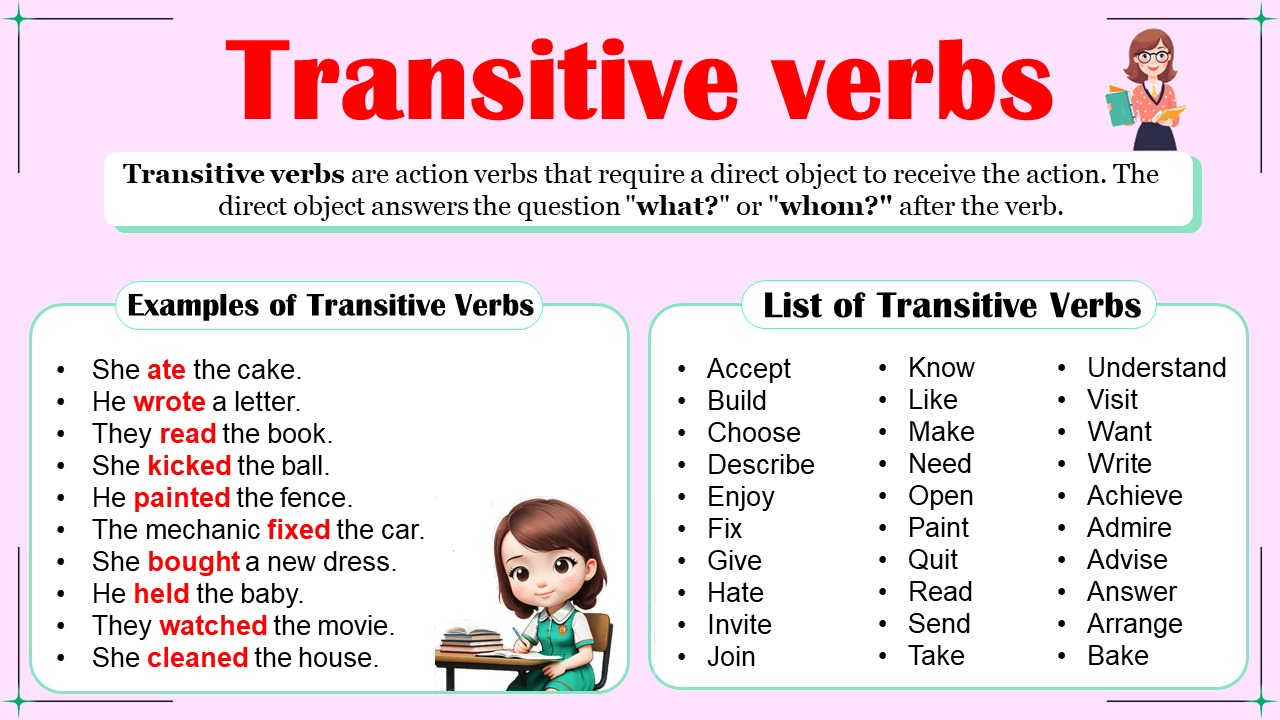
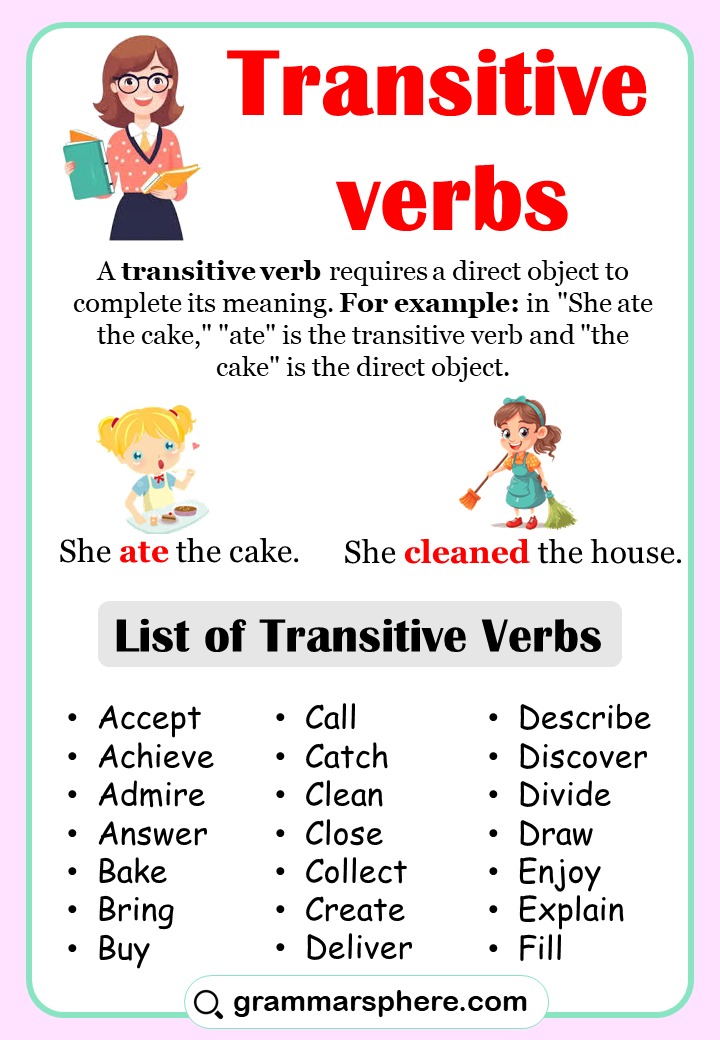
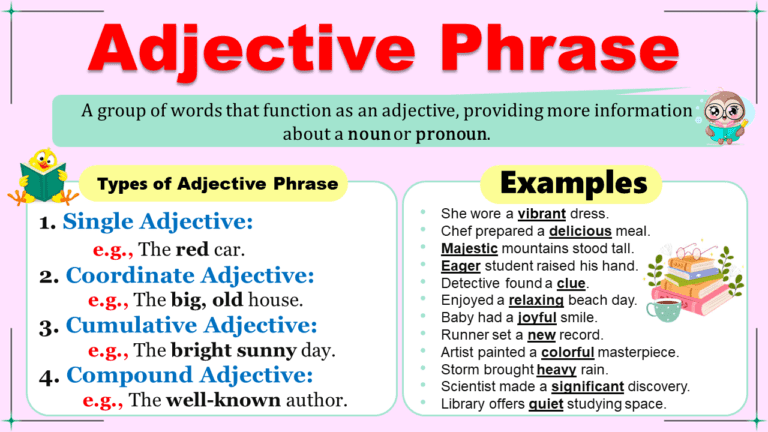
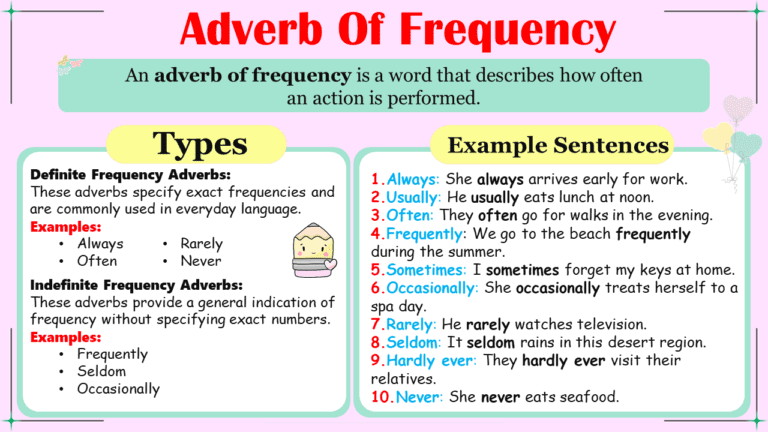
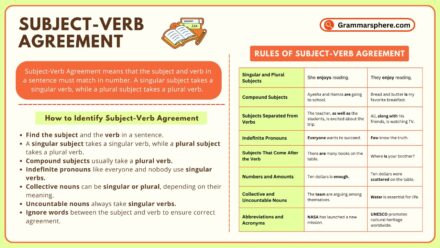
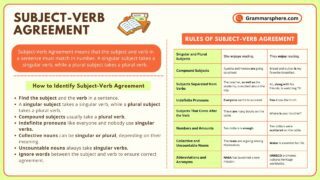
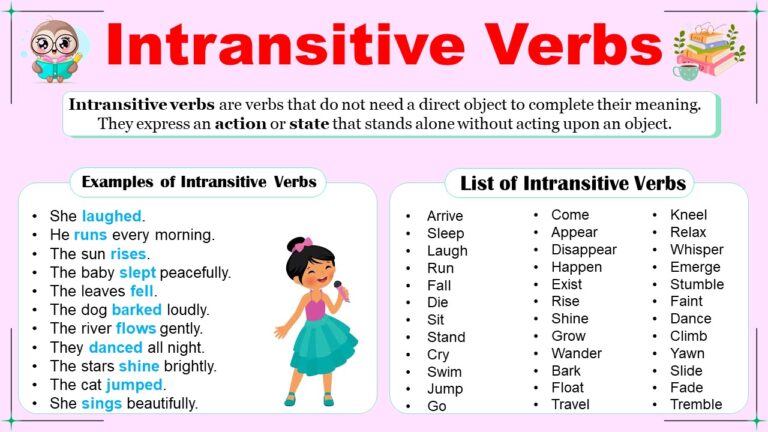
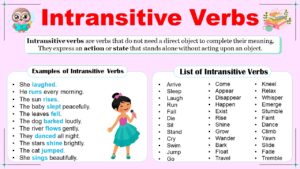
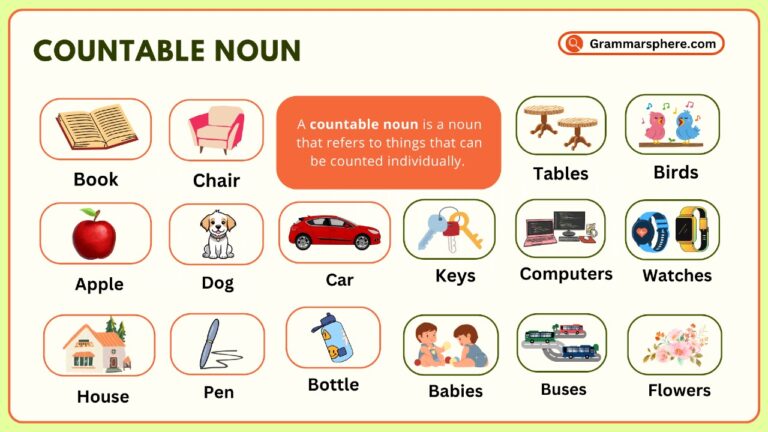
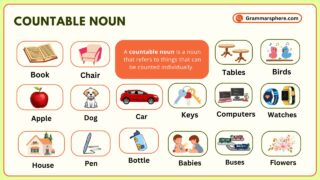
Leave a Comment